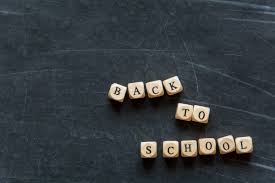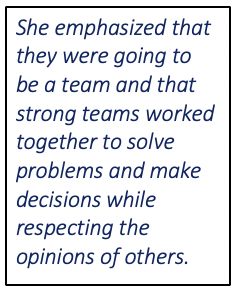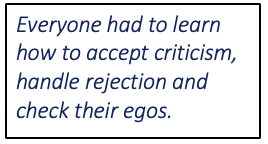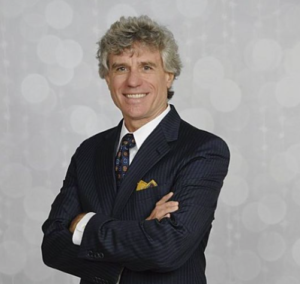
From my years as an elementary school principal, I still recall the excitement and anticipation of the new school year when teachers returned to prepare for the arrival of their students. It is a special feeling and one that continues to stir within me every year around this time. Teachers buzzing about arranging their classrooms with desks, chairs and tables and colorful decorations that were both functional and fun. Materials and supplies neatly organized and readied for day one. Teachers visiting one another’s classrooms exclaiming how wonderful they were and looking for ideas that could be added to their own.
I recall one year when an intermediate teacher informed me that she would not be setting up her classroom prior to the students arrival. Instead, students would arrive to an empty room without anything on the walls and furniture and materials stacked in the hallway. She felt strongly that it was the students’ responsibility to arrange and decorate the classroom, not hers.

It was an interesting proposal and one that I wholeheartedly supported given her rationale. When students arrived, they were bewildered and invigorated at the same time. I recall the students, sitting on the floor of an empty classroom, listening with curiosity to the teacher explaining to them that this was their classroom as much as it was hers and together they would be able to arrange and decorate it. She emphasized that they were going to be a team and that strong teams worked together to solve problems and make decisions while respecting the opinions of others.
Students were arranged in teams and were asked to generate multiple ideas that they would be able to present to their classmates for approval, revision or rejection. Various standards in language and math were creatively woven into the project as students wrote, calculated and presented to one another. Over those first few days, more and more ideas were put into place and the classroom began to take shape.

As a student of leadership, I realized that what was happening in this class was different from many others. Phrases such as “They don’t care how much you know until they know how much you care” and “No significant learning occurs without a significant relationship” are often posted in classrooms. While those sayings are both noble and true, this class went a step further. This class was not only about teacher/student relationships but relationships between students. It was a quest to establish an esprit de corps among the entire class—teacher to student, student to teacher and student to student. In time, parents became part of the equation, too.
They established an identity by creating a class name, symbol, flag, song, pledge and agreements that would bind them together as one. When you asked students what class they were in they didn’t state the teacher’s name, they stated their team’s name. Students felt that they were part of something bigger than themselves.
What I observed over the course of the year was a tight-knit group with an attitude that no obstacle was too large for them to conquer. Students were taught skills not only in self-regulation but also in how to help others in the group with their behaviors, social skills and academic learning.
es·prit de corps
/eˌsprē də ˈkôr/
noun
a feeling of pride, fellowship, and common loyalty shared by the members of a particular group.
Students set academic goals for the class, not just themselves. Students learned to work together in teams to teach, support and encourage one another. The teacher involved students in the lesson planning process, seeking input as to how to best teach content in a way that students would find motivating. Motivation became everyone’s responsibility, not just the teacher’s.
When assessment results became available, team results were examined before individual results. Students learned the concept of mutual accountability and realized that their efforts contributed to the overall group. Celebrations were not just for individual achievement but for class achievement.

That is not to say that this was always a smooth process. Establishing an esprit de corps never is. The students—and even the teacher—had to learn how to get their needs met within the structure of the team. Everyone had to learn how to accept criticism, handle rejection and check their egos. Reflection was a central part of this project with team meetings held regularly to analyze potential problems and solve existing problems away from the heat of the moment.
At the beginning of each year we have to remember that students’ social lives have been disrupted. They are concerned about who their teacher will be and also which students will be their classmates. Teachers have a unique opportunity at the start of the year to begin to foster an esprit de corps among their students that will allow them to thrive individually and collectively, socially and academically.
For additional information, please visit Mark’s webpage.
Click here if you would like to sign up to receive future articles via email. Thank you.
 Mark Rolewski has assisted schools and school districts in designing and implementing successful turnaround initiatives for over 20 years. Mark has assisted with school turnaround in many districts and schools including those in Florida, New York City, Hartford, New Orleans, Memphis, Kansas City and Los Angeles. He is widely sought after by schools and school districts to speak about and assist with turnaround initiatives.
Mark Rolewski has assisted schools and school districts in designing and implementing successful turnaround initiatives for over 20 years. Mark has assisted with school turnaround in many districts and schools including those in Florida, New York City, Hartford, New Orleans, Memphis, Kansas City and Los Angeles. He is widely sought after by schools and school districts to speak about and assist with turnaround initiatives.